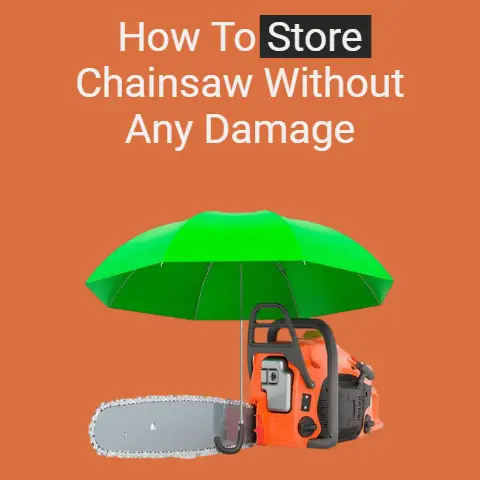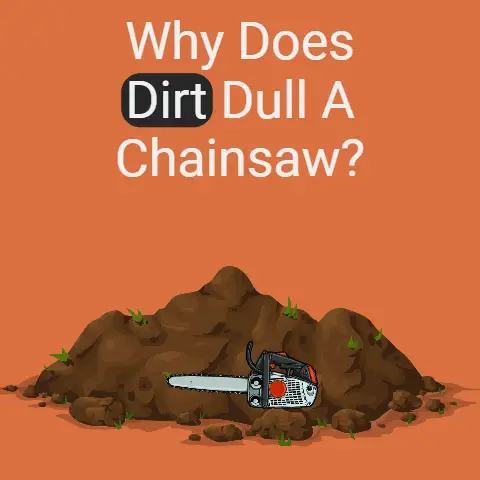How To Use A Chainsaw Bar Rail Closer? (Explained)
The bar rail closer closes easily and quickly the bar groove to match the thickness properly and to the saw chain drive lengths.
The bearings are heavy-duty and ensure long wear.
The chainsaw bar rail closer is built in high-quality ensuring operation as an accurate fail-safe function. It is perfectly adjustable

What is the need for the bar rail closer?
The need for the bar rail closer is to squeeze the chainsaw bar rails to their original shape.
When it is done perfectly, a new chain fits snugly between the rails to enjoy side-to-side movement.
Thus the performance is better and offers a longer bar life.
The bar rail closer performs this operation, and the new chain is used with the same gauge to a few lengths.
As the bar of the rails starts becoming sloppy, the chain moves in the channel from side to side, and when it moves, it is necessary to squeeze them together.
Chainsaw Bar Rail Closer
The bar rail closer easily closes the bar groove and keeps the chainsaw getting an extra life.
Chainsaw bars offer guidance and are prone to operational wear and tear.
The wear is as uneven rails edges and burs form. Fixing the chainsaw bar rail closer requires a dressing tool.
The chainsaw bar tool has a flat file featuring a straight edge.
It files uneven rail edges that cause continuous wear and ensures the edges are perfectly squared.
Ascertain the bar tool is clamped tightly and file the rails until the edges appear square and smooth.
Inspecting a Chainsaw Bar
Checking the edges of the bar rail in a chainsaw is important to know if there are localized bumps or pits.
Using the dressing bar or grinding bar, you can fix the rail dips.
The next step is to check the chain for any sideward play.
Horizontally, tighten the chain by hammering its rail, and the third step is to look for uneven rail edges in the chain.
Check if the chain is sitting low on one rail and on the other, it is high.
If so, fix it by dressing the guide bar using the rail-dressing tool.
The bar wires the chain to rotate at fifty miles per hour speed.
The wear rate at such speeds for the bar has an impact on wood and it may damage the bar.
The guide bar is in high-quality steel plates, and it sustains wear as much as possible.
The bar features a narrow groove, and the chain sits in that place. The bar groove edges are known as the rails.
However, they are relatively thin and the foremost to receive blows from the chain that the bar rails are prone to damage.
chainsaw bar damage
This chainsaw bar damage is in three types:
Rail Dips
The rail’s edges feature easy-to-spot localized bumps or pits.
The pressure of the chain’s dynamic load creates dips around the edges of the bar.
If the dips are not deep and away from the nose, they may be nullified by bar dressing or grinding.
Narrowed/Widened Groove
With improper lubrication and rough use, the groove is widened on the side. It is apparent as you see the chain play sideward.
The grooves widened requiring tightening the chain and hammering its rails.
The grooves get narrowed due to the pressure of the two faces of a log and it is to be fixed by hammering and placing a screwdriver in the groove to eliminate the pinch.
Uneven Rail Edges
They are common occurrences and are in use on the guide bars. The edges of the rail wear out and become metal sharp strips.
As the edges become uneven, they affect the operation of the chain.
The chain sits lower on one rail and higher on another so that the chain may cut crooked.
The ideal way is to solve the problem of the uneven rail by dressing the guide bar with a rail-dressing tool.
Steps to Dress a Chainsaw Bar
A chainsaw bar may be dressed with a belt sander or a flat-file. It will smooth up on the rail edges of the bars. The dressing tool is special and files at 90 degrees angle.
Using a Belt Sander
It is easy to operate belt sanders.
The best way of dressing a bar is by using the dressing tool and the sander together.
The dresser removes metal chips, but the rail edges are not squared.
Thus, the chain sits unevenly.
Using the sander, placing the bar’s rails, and pressing it inwards ensures you get a smooth, nice finish at the rail edges.
You may repeat the same on the bar’s other side the same procedure.
Using a Hand Dressing Tool
A rail dresser is a tool available online, or at specialized stores. It works on various bars and is relatively cheap.
Step-by-step process to use the tool:
Clamp the bar
Clamp firmly before the bar dressing to a fixture. A great option would be a bench vise to fix the bar.
Ensure it is clamped with the shortest edge between the wise jaws and rails facing upwards.
Get a dressing tool
File the rails and clean them from the burrs. It may be done if you use a flat file than any dressing tool.
The advantage is you can get this tool cut without any effort at a 90 degrees angle.
It is relatively cheap and offers good results with bars.
File the rails
Press the file of the dressing tool against the rail’s top surface.
Apply downward pressure on the rails.
Slide in the forward direction the tool for you to remove the metallic chips from the rails.
Repeat several times the filing until the rail top edge appears more smooth than sharp.
Repeat on the bars another side the same process.
Wrapping Up
Solid chainsaw bars are easy to straighten using the correct technique.
While the laminated bars require more effort to perfectly straighten.
Mark the rails before dressing and use a blue market to distinguish the bumps and pits as the file is smoothening the rails.
However, a bent chainsaw straightens, but its lifespan becomes short.






